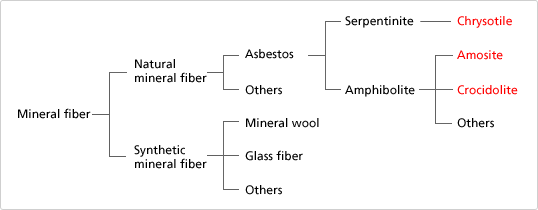
Health hazards caused by asbestos are rapidly becoming a matter of great concern in today's Japan. Asbestos was once used and is still present in residential building materials and household items, which means it is a problem that affects our daily lives. Though mineral wool and other man made mineral fiber are now being used as asbestos substitutes, it is not possible under ordinary microscopic observation to distinguish harmful asbestos from such substitute materials. It is therefore necessary to be able to clearly determine whether the material in question is asbestos or not. In June 2005, the Ministry of Health, Labour and Welfare issued a directive calling for the use of the “phase contrast dispersion staining method at 400x magnification” in the inspection and analysis of asbestos. We talked with Mr. Yoshihito Konishi, Manager of the ACCURACY CONTROL CENTER AT THE JAPAN ASSOCIATION FOR WORKING ENVIRONMENT MEASUREMENT, about the role of Nikon microscopes in examining for the presence of asbestos.
Asbestos, a new problem in Japan
Firstly, could you tell us how asbestos has become such a problem in Japan?
I started researching asbestos in 1974. The Industrial Safety and Health Law stipulated that industrial sites using asbestos must measure the concentration of asbestos present in the work environment and keep a record of their findings for the next 30 years.
When buildings collapsed as a result of the Great Hanshin-Awaji Earthquake in January 1995, we became aware that asbestos had been used in many building materials. And now, many buildings that were built around 1975 are reaching the end of their durability period. Asbestos became a problem in Japan at the same time that the national government was working on establishing domestic laws governing asbestos. Now the government is accelerating its measures to tackle this problem.
Why were strict regulations not put in place sooner despite the fact that asbestos was known to be a dangerous substance as much as 30 years ago?
Asbestos was an extremely convenient material. The story of Hiraga Gennai (1729-1779), a Japanese inventor and scientist, having discovered asbestos in the mountains of Chichibu, northwest of Tokyo, back in 1764 and making cloth that didn't burn is well known. Going further back in history, asbestos was found in cloth that was used to wrap mummies in Egypt. Asbestos was also once used in the protective clothing of firefighters. Asbestos has been an indispensable material throughout much of human history.
Asbestos is a natural mineral that has been widely used as a building material due to its superior characteristics and low cost. Japan stands on strata of serpentine rock that includes chrysotile, a type of asbestos; so we have always been around such materials. Because of this, I believe there was little awareness that asbestos should be handled as a dangerous substance.
Is there any assurance that mineral wool, which has similar characteristics, is safe?
The International Agency for Research on Cancer classifies asbestos in Group 1, “Carcinogenic to humans.” Since the average diameter of mineral wool fiber is between 3 and 5 micrometers, up to 100 times thicker than asbestos fiber, it does not enter the respiratory system as easily and is classified in Group 3, “Not classifiable as carcinogenic to humans.”
Glass fiber has a similar shape to that of asbestos and also has the potential to pierce the lungs. At present, glass fiber is not categorized as hazardous material, but it certainly seems to fall into a gray area. I think glass fiber will be inspected more aggressively from now.

Asbestos and other mineral fibers

